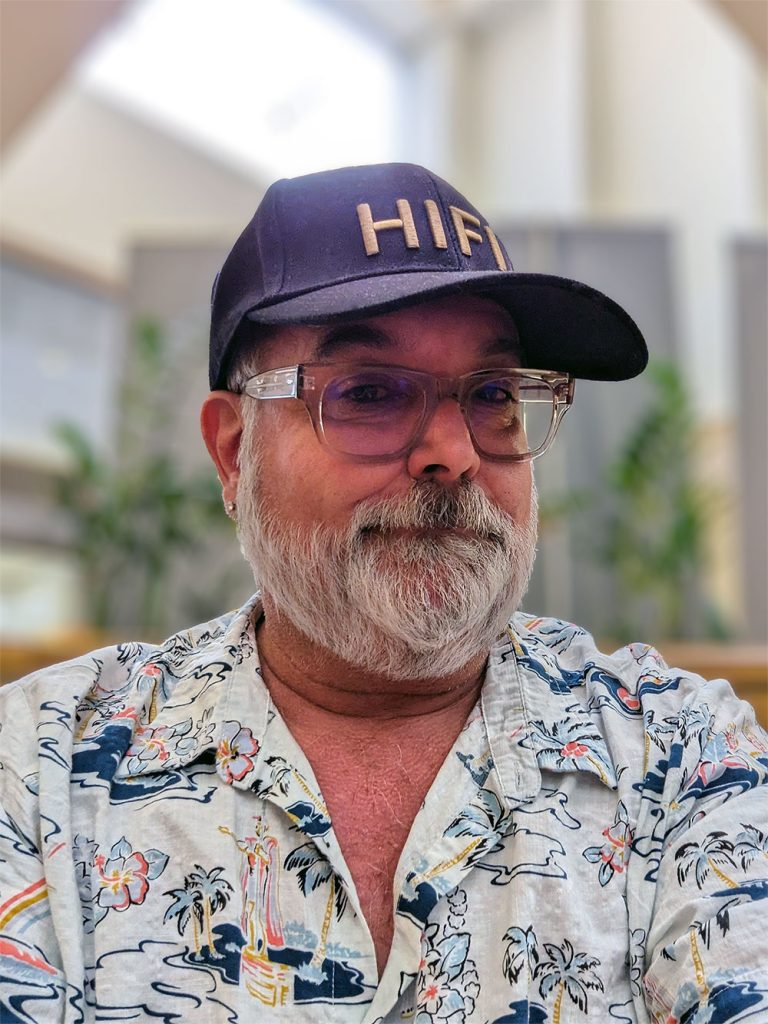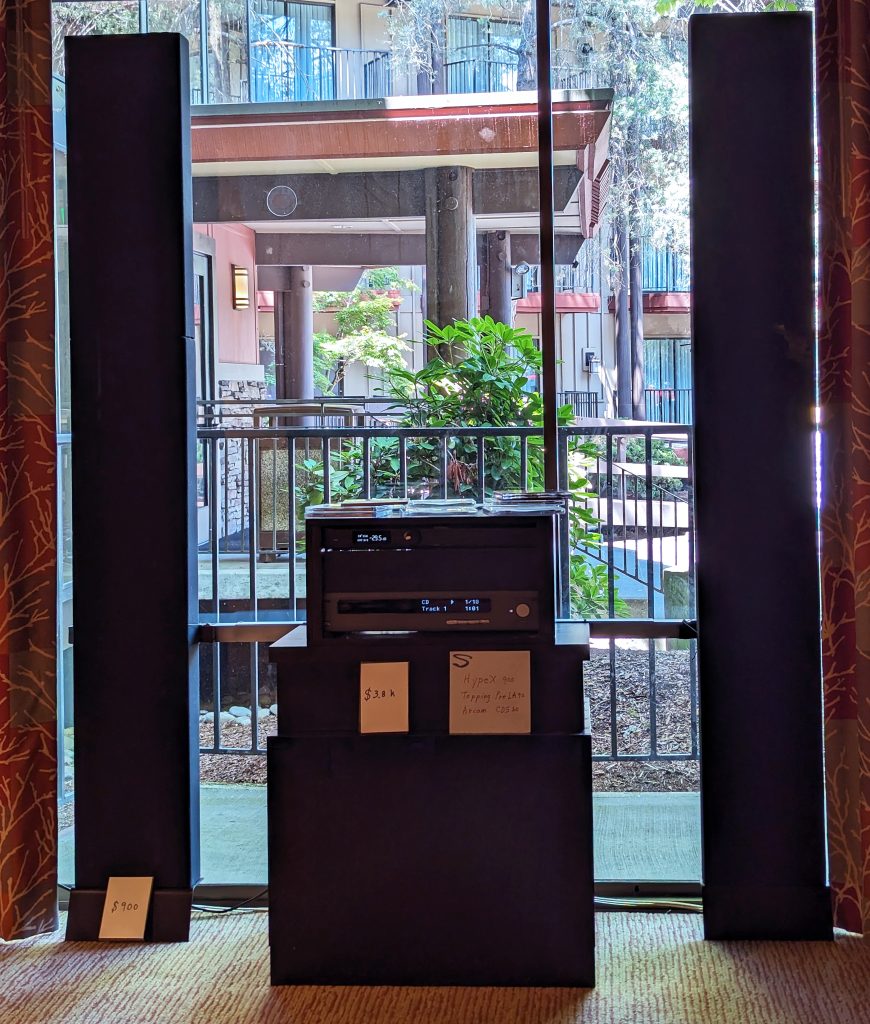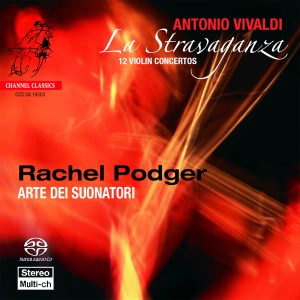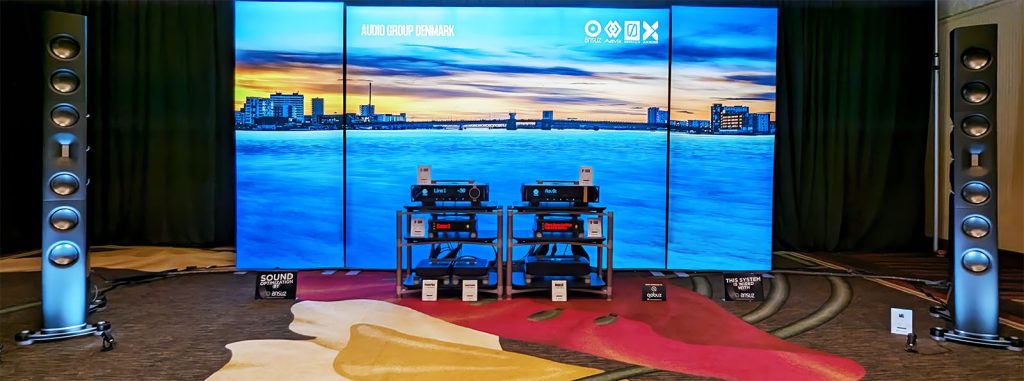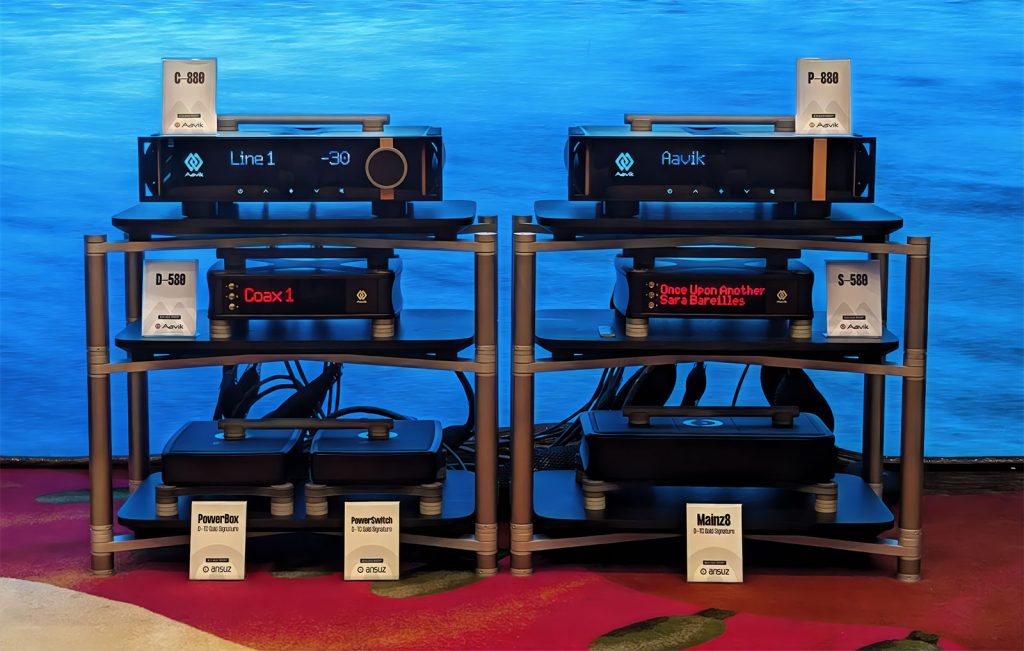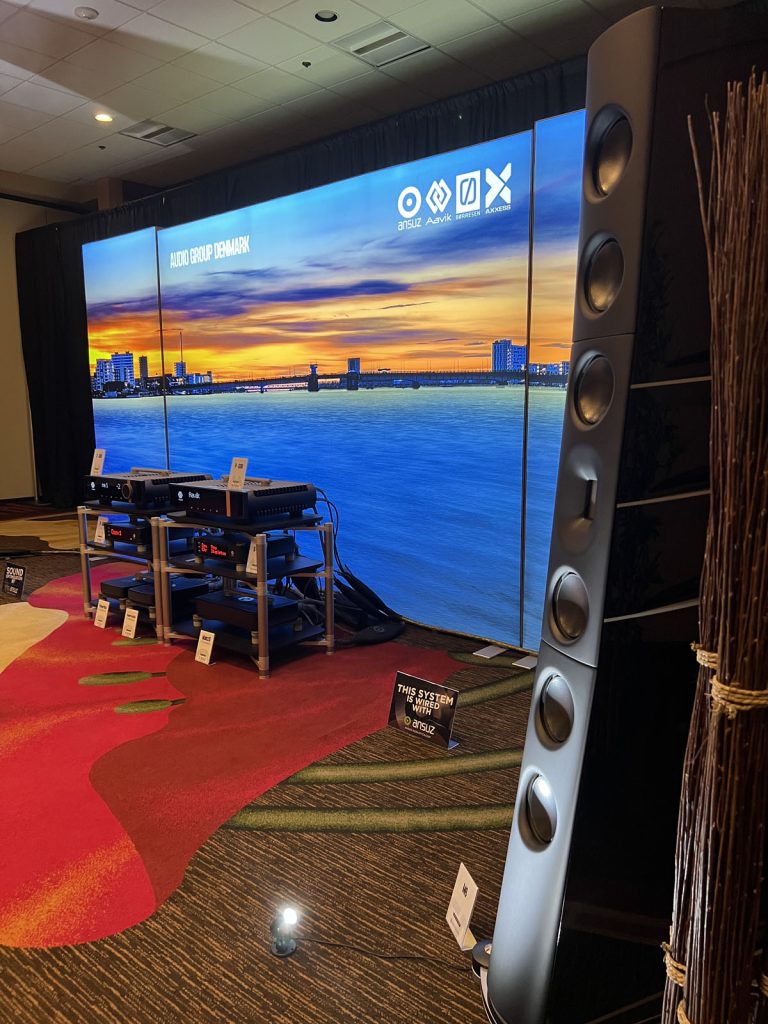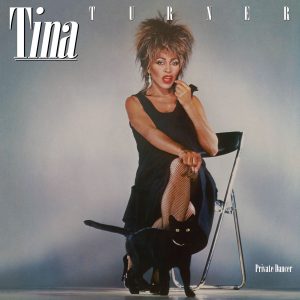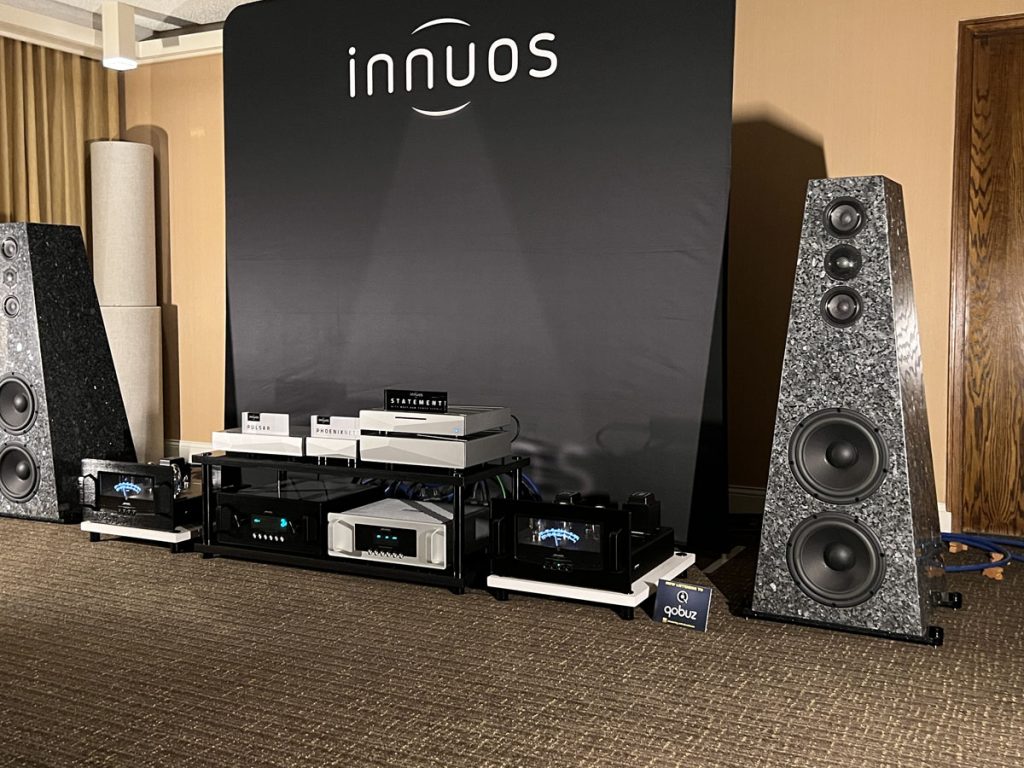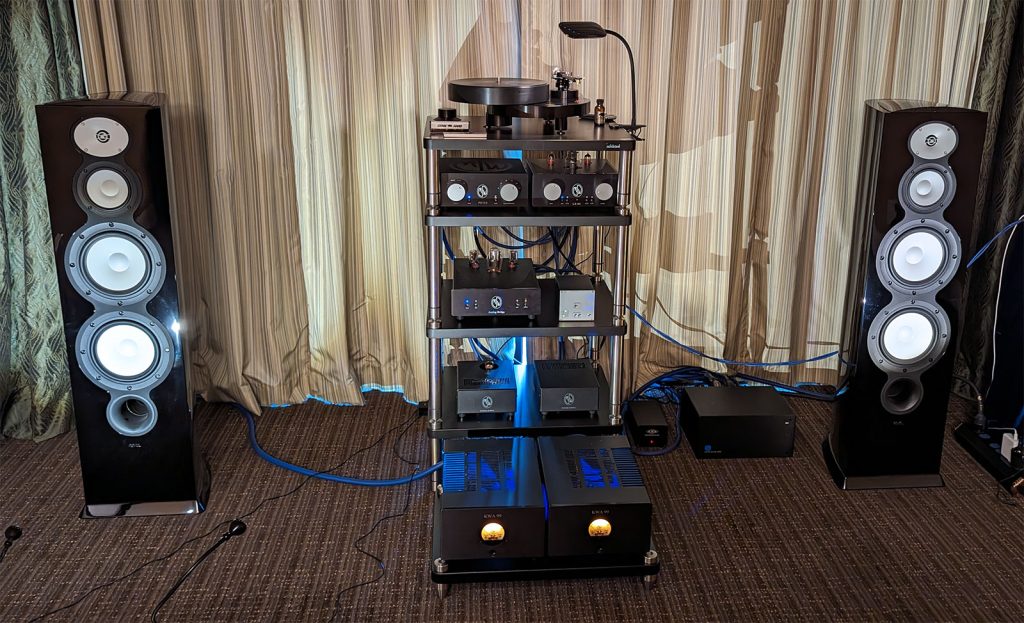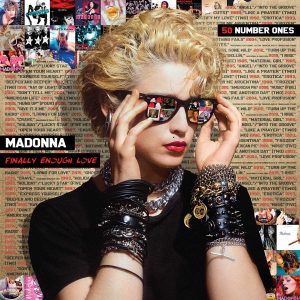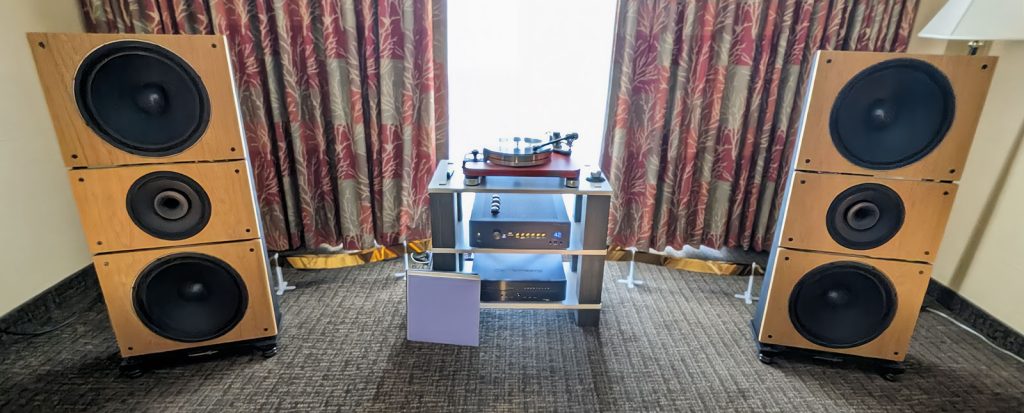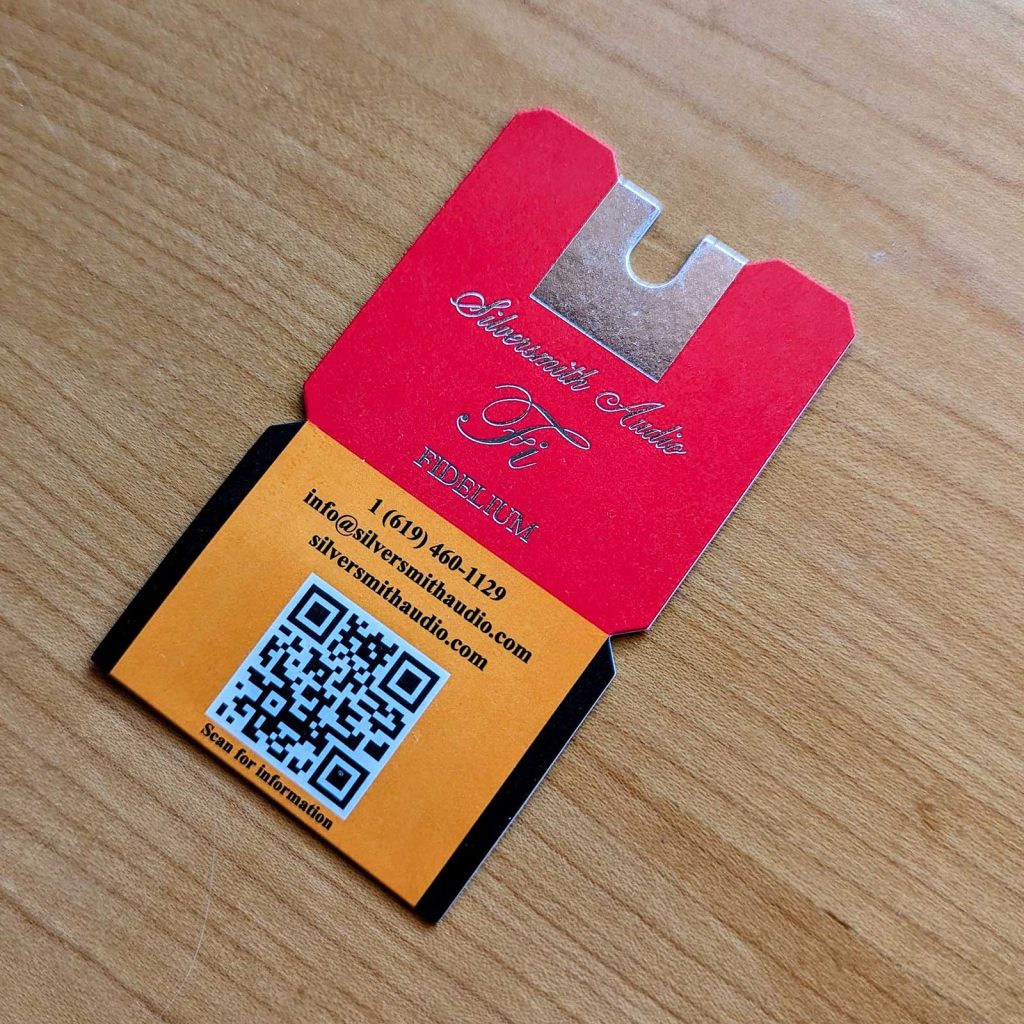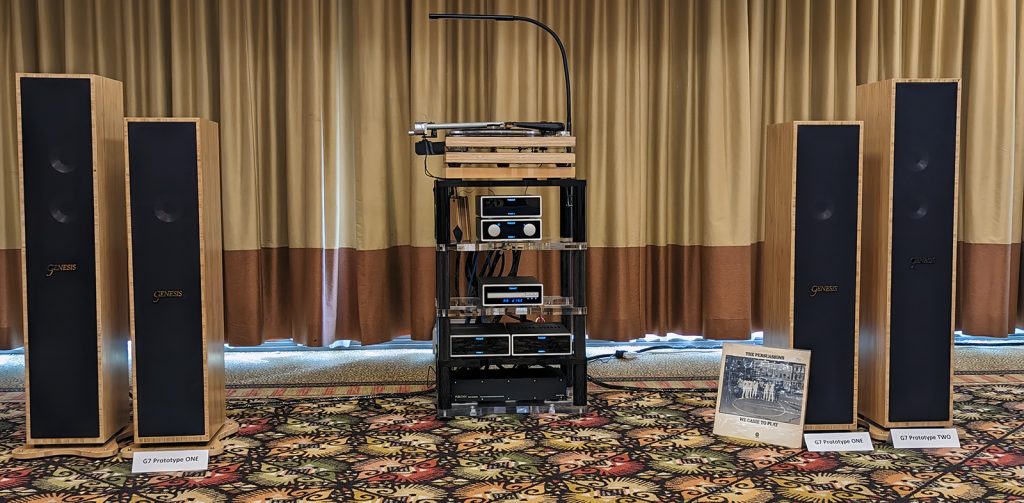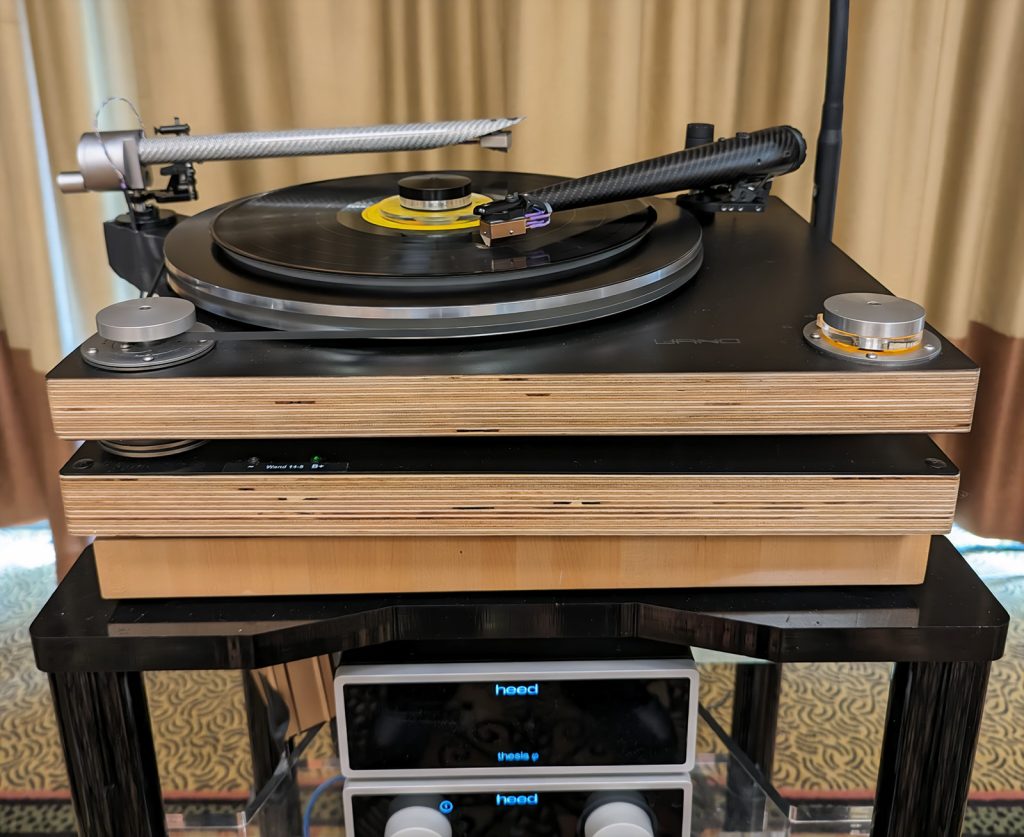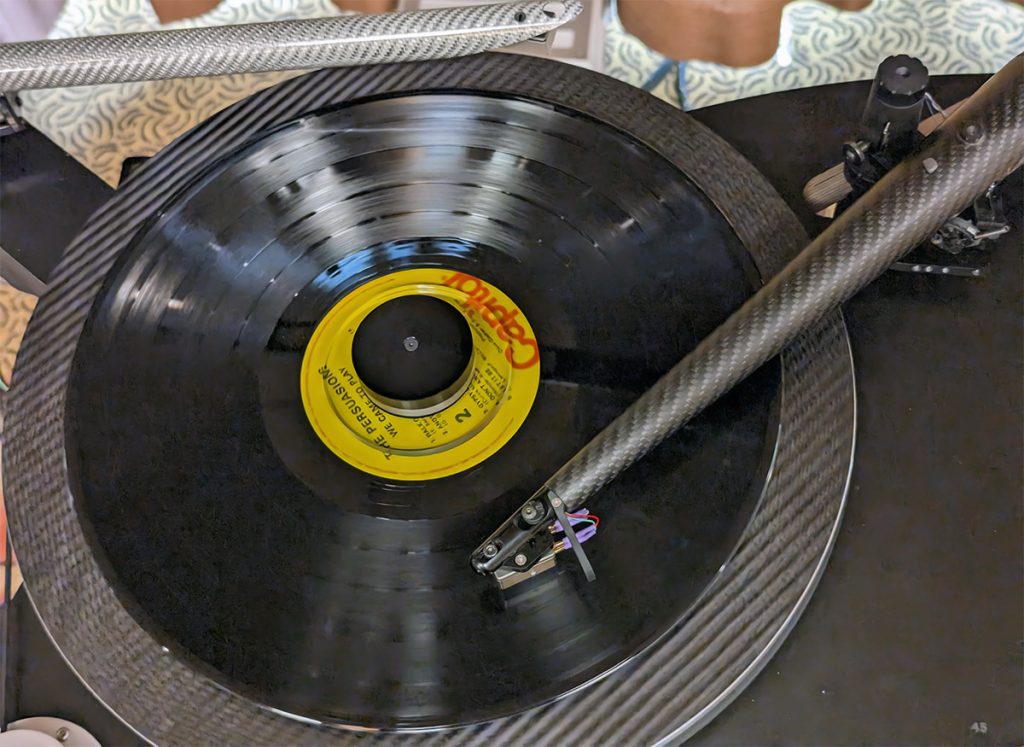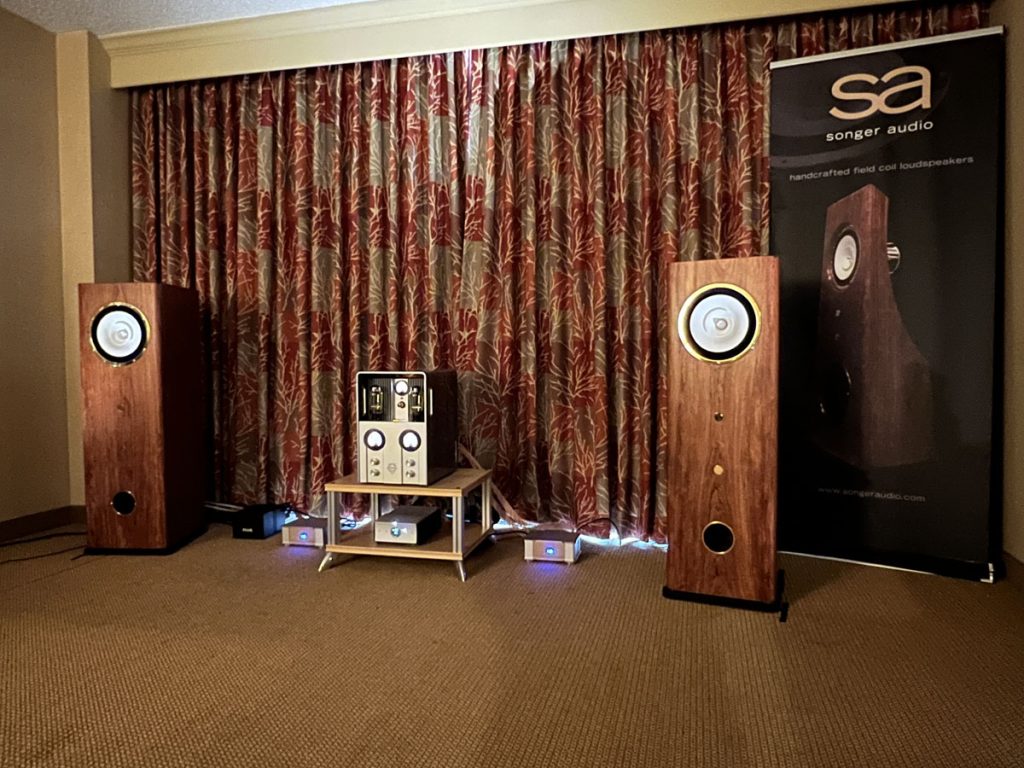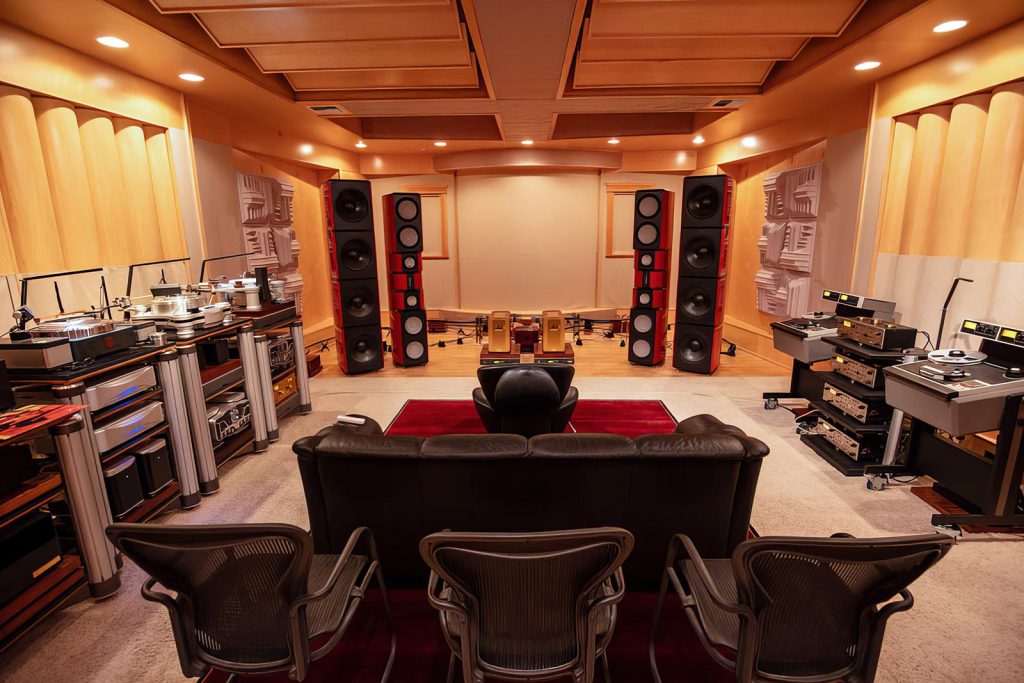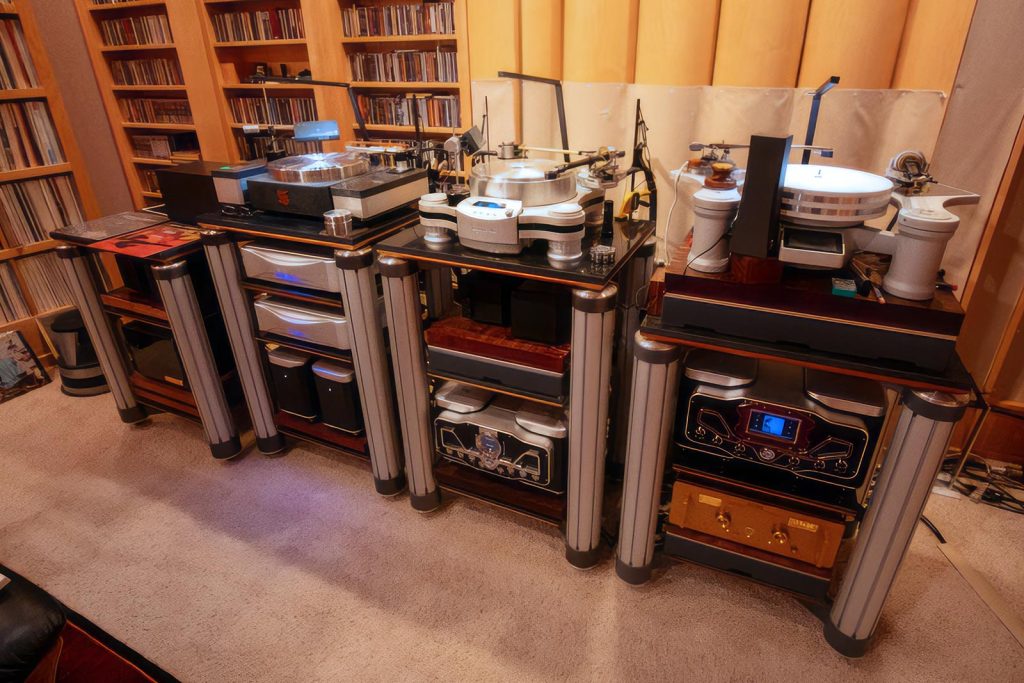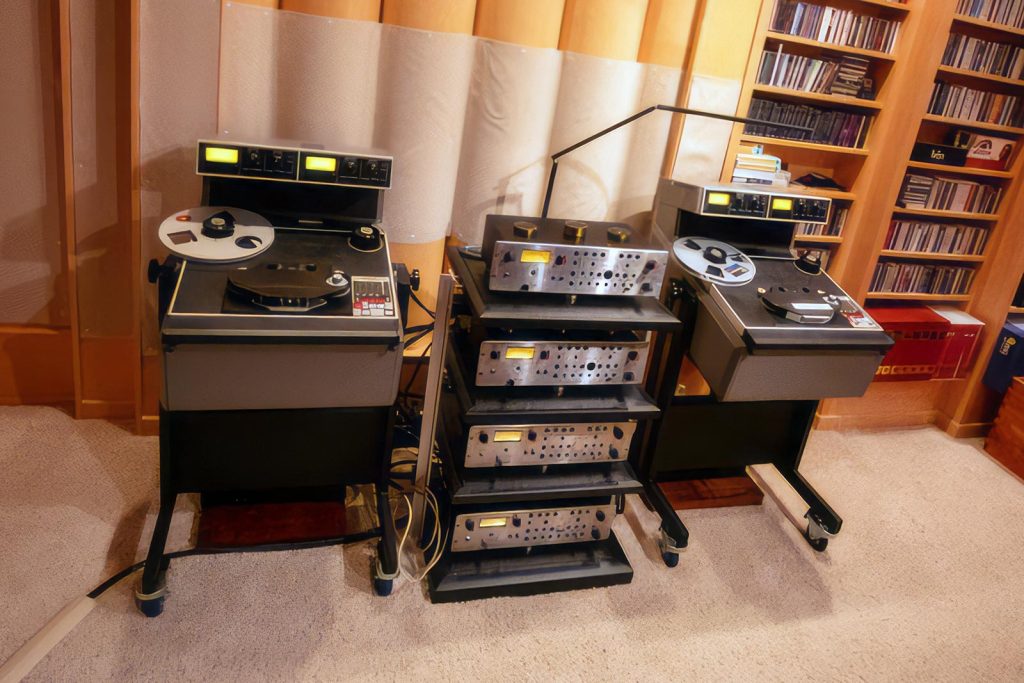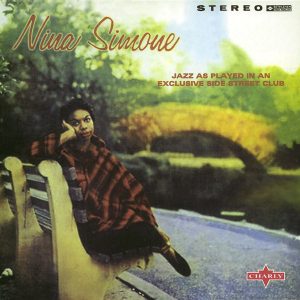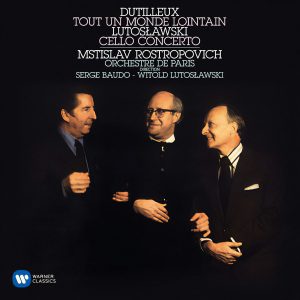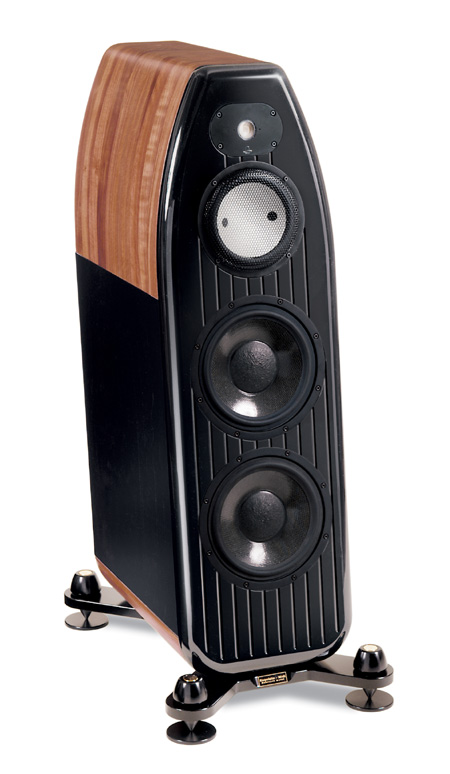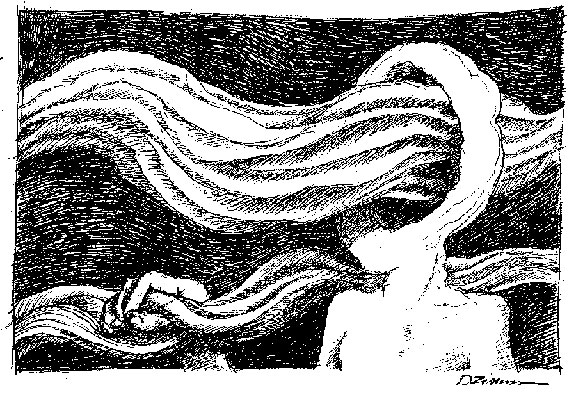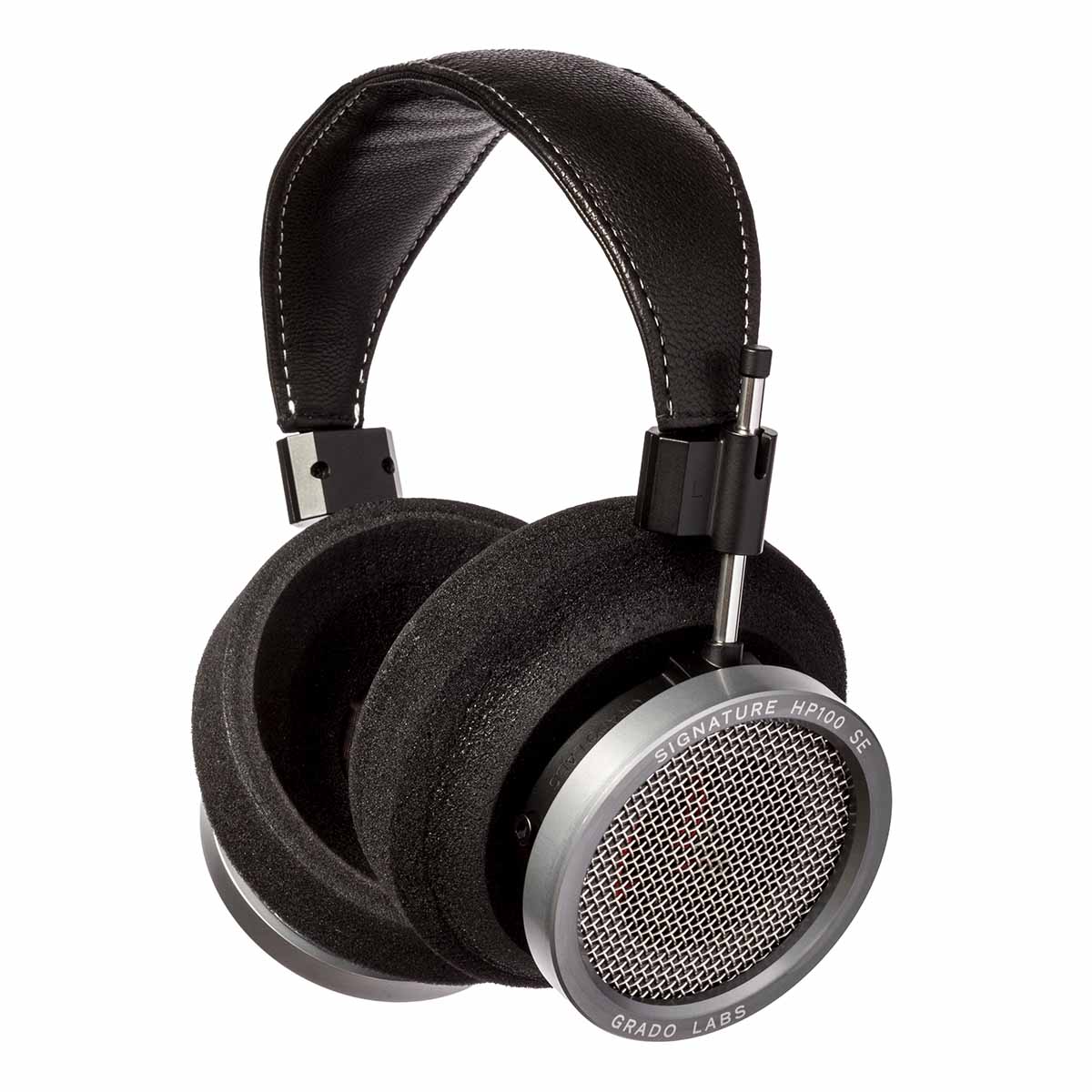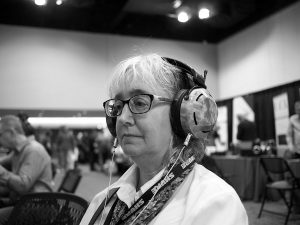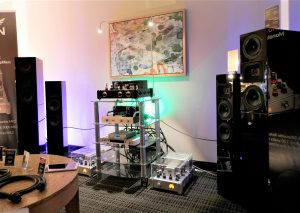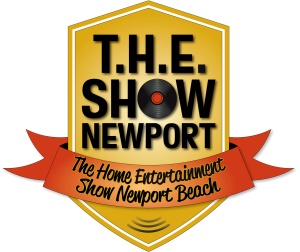The following show report was written by John Hughes. John is a long time friend and offered to share his perspective of the Pacific Audio Fest.
A brief introduction to John Hughes
I started my Audiophile journey at 16 when I begged my father to buy a vintage Magnavox Console at a garage sale. I was entranced by this 7 ft long wood behemoth powered by Marantz tube electronics driving a wonderful two-way horn system with 12 inch woofers. Powered by my parent’s reel to reel tape player and a Technics direct drive turntable with a Grace F9e cartridge, I laid on top of it as l listened to Classical and Folk reel to reels from the 60s, and Pink Floyd/Aerosmith/Rush/Cat Stevens albums. I was transported to another world. In many ways my lifetime quest with HiFi has been to recapture that immersive, emotional experience.
I spent formative years working at a very 'Hi-End' audio retail shop, mostly in setup and warehousing. I built a career in Silicon Valley Tech and whenever I could overlap with audio projects, I jumped into them. Around 2000, I was a contributor and beta tester for the FLAC (Free Lossless Audio Codec) open-source project. In 2001 I was a contributor and categorization editor for the Music Genome Project (HERE), which became the Pandora streaming service. The knowledge from this project became the basis of all music recommendation engines today including those of Apple Music, Tidal, and Qobuz. From 2004 to 2010 I was the developer of the VRS Revelation Music Server (HERE), one of the first commercial music servers. During this time I pioneered a number of ways to improve computer playback including isolating Ethernet with transformers, optical bridges, switches, improving clocks on motherboards, modifying power supplies, loading software and operating systems into memory, etc. It became obvious working on the Revelation system that the biggest factor holding back digital playback was the quality of music playback software. In 2010 I collaborated with Jonathan Reichbach of Sonic Studio on a hardware and software solution that was launched as the Amarra Studio (HERE).
I've been through countless iterations of personal systems, trying just about every analog and digital technology, tubes, solid state, and Class D. Digital and now streaming has come a long way since the days I was building music servers. The quality of a $1000 DAC and streamer today is better than the bleeding edge systems I produced back in the day. I still work on my own digital system and my mission is still to render music through digital as good or better than reel to reel tape or top line vinyl playback systems. It gets closer every year, and the price to truly excellent sound continues to drop. Even though I spend most of my time with digital, I do adore excellent analog. Please invite me to your next record and tape party!
Now on with the show report!
The weather was warm and sunny, the mood was upbeat, and there was a tangible sense of community on the grounds of the SEATAC Doubletree Hotel hosting the Pacific Audio Fest this June 2023. Many thanks to Gary Gill and Lou Hinkley (of Daedalus Audio) for organizing, and to Marjorie Baumert (from the RMAF Shows) for bringing her kind support to keep things running smoothly. This year was a strong showing, and was the definitive 2023 audio enthusiasts' event for the West Coast of the USA. It was a pleasure to reconnect with so many old friends, colleagues, and immerse myself in the familiar sonics of brands I've known for decades.
Here I present some of my impressions of a few of the rooms and exhibits that stood out to me. My goal is not to do an accounting of all the equipment presented, but rather contribute a unique perspective and provoke thought and discussion. In no way do I present these as definitive. Others I spent time with at the show had different and polarizing experiences with the same systems. My goal is to inspire readers to participate! Come to a show, engage in lively informed debate. We all benefit from an engaged and informed community; it can be rewarding and a whole lot of fun!
Music was front and center at the show and Qobuz music streaming was a sponsor. I have a subscription to Qobuz's Sublime streaming service and use it primarily to discover new music and purchase Hi Res albums. Music was streaming from Qobuz in most systems at the show. The easy access to almost any piece of music show goers could ask for resulted in hearing a wider variety than I've heard at shows in years past. This is a welcome change. Anything that increases the audiophile's reach to quality musical variety is a positive trend, and the number of streamers and combo products that support Qobuz is growing.
Jim Suhre https://jimsuhre.com/
Ingenious, the word is underused, but should be applied to Jim Suhre's latest speaker. Jim has been designing speakers since the mid 1950s! That's pretty much the same time color TV was launched. He's learned a thing or two about balancing speaker design with room acoustics and beyond. His latest foray is a tall column with 10 2.5" drivers in a tight circular configuration. Ingenious I say! No crossovers, efficient, 16 ohms, with a channel within the column that acts somewhat like a rear horn for the bass and ambience, except that it vents from the top. Jim says this design will be largely unbothered by room acoustics and placement.
For me the sound was fast, light, airy, organic, and clear. And yes, I heard very little room resonance or smear to the sound, though the speakers were backed up against the full-length windows.
Jim cued up one of my favorite artists, Rachel Podger, playing Antonio Vivaldi's La Stravaganza. This recording is full of contrasts, moving from achingly delicate passages to soaring heights with vim, vigor, and bombast. These speakers captured the delicacy and speed of Rachel's violin, carrying me away for a few minutes.
The very best part of the tale is that Jim is selling these speakers for $900 and showed with entry level gear with a total of the system price of $3000! With preferred placement against the wall for a very small footprint, these may prove irresistible for music loving audiophile.
Audio Group Denmark (Børresen, Aavik, Ansuz)
AGD's sophisticated grounding, EMI management, and resonance optimizing proprietary technologies are applied to every component in increasing measure depending on the price tier. This lends everything in their lines a quiet clarity. The sonic value delivered in these understated components and speakers always impresses. Sometimes both the look and sound quality are a bit understated. But take a deeper listen and you are rewarded with a glorious rendering of music where all the fundamentals are aligned, and the message is clearly conveyed.
Understated is not the adjective that comes to mind when you see and hear the new flagship Børresen M6 Loudspeakers ($550,000)! They are gorgeous svelte beasts that dominate the room and the acoustics. Their new flagship speaker produced a level of power, a Wallop Of Power as it were, coupled with a finesse and clarity that is refreshing in a show environment. I asked them to play Tina Turner's Private Dancer (RIP) in Hi-Res, and the cavernous and deep soundstage could not be ignored. The bass was tightly defined and propulsive, driving the music forward in a way that made NOT moving to the music next to impossible. However, the enormous room robbed us of the very deepest bass notes. I'd love to hear these in a more realistic sized room where the bass could bloom.
AGD was also demoing their entry level equipment: the Børresen X3 speaker ($11,000) and the new Forte 3 integrated amp/DAC/Streamer ($11,000). My ears did not experience it, as they were playing the big dogs each time I was in the room. But friends at the show said that these acquitted themselves well and are worth a listen.
AGD were also showing the Ansuz line of accessories that potentially bring home some of their signature quiet clarity to the rest of your components. These are beautifully designed and made to fit many scenarios in a home system at different price levels.
Acora Acoustics, Audio Research, Innuos, Cardas
A bronze fist in a velvet glove for the KO.
Sheree & Val Cora with Isaac Markowitz make up the rock solid Acora Acoustics trio. Along with Kevin Jackson and the Innuos team they have been putting together blockbuster show rooms all year. Audio Fest was no exception! I also spent substantial time at their room during THE Show earlier in the month. The material differences being the Audio Fest room was much smaller, and the electronics were Audio Research instead of Boulder and Nagra. Many reviewers have acclaimed the systems this team assembles as best in show, and while my sonic tastes and priorities differ quite a bit from the Ton, the performance here overrides any of my priorities, which are mostly based on working within the limitations of budget and access.
The price points of this system rise to nosebleed territory, but my experience was standing in Yosemite Valley, looking up at the granite rock of Half Dome in wonder, while a small part of me asks if I will ever get the chance to scale such peaks in my lifetime.
Specifically, the Acora Acoustics flagship speakers are freer from coloration and transducer limitations than almost anything I've heard. Images float freely and solidly within an immense soundstage. There was an unforced resolution and bandwidth on every type of music playing. I even experienced a suspension of belief more than once.
The Cora's recently acquired Audio Research, and Val is now CEO. Audio Research is a venerable company, and with Val at the helm I assume the brand will receive some welcome innovation and polish. Val was determined to show us that Audio Research electronics could play with a majesty and limitlessness most of us were not familiar with!
I am first and foremost a digital nerd. Part of my history with HiFi was manufacturing some of the first computer-based music servers, and pioneering playback software that was built to sound better than the average bits.
So naturally, I've had a fascination with the Innuos digital streaming and Ethernet product lines. Kevin Jackson, the US representative for Innuos, spent some time educating me about the ins and outs of the line. I am impressed! Innuos applies radical engineering to every aspect of their products where every millimeter of every component matter, and each line of code from basic drive firmware to streamlined algorithms for playback has been built in service to the music. This is frankly the kind of refinement I only dreamed about with the limited resources and rudimentary parts I had access to back in the day.
Returning to my experience with the music: the deft handling of digital files through their custom software and incredibly built Statement server delivered a clearer, cleaner signal to the DAC. There was quite simply more THERE there when listening familiar high-resolution tracks I'm intimately familiar with. I don't think I've ever heard digital delivered so fluently.
Modwright, AMG, Weiss, Cardas, Revel
Tight and Wright.
Dan Wright brought his latest electronic marvels to the show including the KWA 99 monoblock amplifiers and LS 99 balanced tube preamp. In this new crop of products, Dan is reducing the form factors, with more compact chassis, but same quality and attention to detail. The monoblocks are a bit of a departure from his playbook in that they are mosfet driven. But the sound was pure Modwright. He showed with Revel F228Be speakers, and an AMG turntable with a Benz Micro cartridge. Digital was handled by the new Weiss DAC 204 driven by its stock switch mode power supply. Dan has intimated that a compatible linear power supply might be in the works to pair with the already excellent Weiss.
Over the years Dan has modified a few components I've owned, always improving them significantly (hence the Mod in his company name). His own line of components is where the real love is to be found though. This show system had his trademark sound, an easy clarity mated with personable and accessible sonics which is rare in solid-state or tubes, which allowed me "Get into the Groove" (you gotta prove your love to me). Cueing up Madonna's classic 80s dance track proved Daniel Wright's love of the music. If he can make this album boogie, I'm down with spending more time on the dance floor with Modright.
PureAudioProject, Linear Tube Audio, Silversmith
Projecting coherent pure music with rare fidelity.
I've been really jazzed to hear the PureAudioProject speaker line, their designs are very sympatico to my own preferences for single driver coherence and open baffle speakers. This show they played music with their three-way driver and crossover design, the Trio15. The Coax10 center driver with a 10-inch mid/woofer was on the outside and a polymer driver horn inside for the tweeter. This was flanked by a pair of the now classic 15-inch NEO woofers. All cabling was by Silversmith Audio's Fidelium line. Digital was done right by the Denafrips Terminator Plus 12th Anniversary edition. Analog by a VPI Scout turntable and Shyla cartridge. Linear Tube Audio provided the Z40 integrated amp.
I listened to quite a few vinyl tracks and the sound was gorgeous, open, and dynamic. With an unforced presence, the soundstage was deep and wide with impressive layering of instruments mated with spot on tonality.
Just before the show I was able to score a set of Silversmith Fidelium speaker cables on the used market, and I am looking forward to hearing them. I spoke with Jeffrey Smith about the technology within the Fidelium speaker cables. They are made from a unique alloy that allows maximum transmission, with well controlled impedance and resistance, in a super flat wide ribbon profile. The best part of this is the price for a pair of speaker cables starts at under $1000. His previous generation of very well-regarded cables were crafted from alloys containing silver and palladium at about 10x the cost. He stands by the performance of the new Fidelium's as superior to those. Many reviewers have been gob smacked by the tremendous value Fidelium represents. Jeffrey was also playing his prototype interconnects on turntable and DAC. They have a similar flat ribbon profile. I am hopeful he can turn the interconnect market similarly on its head when he releases these. They are on my shortlist to try. Also, I loved the 'carte de visit' Jeffrey gave out shaped like the terminations of the Fidelium cables.
Genesis, Heed, Design Build Listen
In a room with 99 Problems (from a setup perspective) but Sonics Ain't One.
I cannot stress enough how poor the show conditions and inappropriate room configuration were for the second system Genesis setup. It was in the same room as the gargantuan Genesis Prime+ setup set off to one side of the room that was about 5x too big. But OG Bob Clarke of Profundo, the Rep for Genesis, Heed, and Design Build Listen, managed to create a lively, dynamic, open window into the vinyl they were spinning on their prototype systems.
First a quick note about the main Prime+ setup on the left side of the room. I could hear the genetics of the new Prime+. They reminded me of the equally outsized Infinity Reference Standard V. These were the ne plus ultra in the 80s, and the grandfathers of the Prime+. I worked at a shop that sold these and I got to spend significant time with them. It is impressive to see this classic re-envisioned and updated to 21st century sensibilities.
The second system was mostly prototype equipment. There were two Genesis prototype G7 speakers made with bamboo ply construction. The cabinets seemed to be minimally damped and utilized the ribbon tweeter technology inherited from other Genesis speakers. Heed Audio provided phono, preamp, amp, and CD duties, which all had very attractive pricing for the performance heard. Analog was all prototype and provided by Design Build Listen, with cartridge by Hyper Analoque—the Sonic X8. The turntable was a dual plinth prototype—the Wand 14-5. The arm was an update to the current Wand as well.
The resulting sound was extremely satisfying. It was just so vibrant, alive, and launched music into the room commanding me to listen. And listen I did, whether it was in the prime centered seating, or walking around the room, or quietly chatting to my equally giddy friends. Sonics managed to overcome the issues of the room quite dramatically. This is the kind of juicy music vinyl lovers live for. I hope Genesis continues this prototype path as it was clear there was a real synergy between the drivers and the bamboo cabinet. They looked excellent as well. The analog was truly sophisticated, and I look forward to hearing more from Design Build Listen. Take Heed. I'm going to. The prices are very reasonable considering the performance I heard. The phono was $2400, the preamp $3300, and an optional power supply upgrade (which powers both the preamp and phono) was also $2400. Savvy music making? Priceless.
Songer Audio, Whammerdyne
A tropical vacation.
The S2 open baffle speakers consist of a full range driver mated with a 15-inch woofer. The main driver is a dipole (with a whizzer cone on the back as well as the front), and uses a field coil instead of magnets in its design. Whammerdyne played two amps, the DGA-1, and The Ultimate Truth (discontinued). Whammerdyne is committed to the glory of the 2A3 tube which has a reputation and signature of warm lushness, and these amps lean into it hard.
The soundscape here was the aural equivalent of a jungle paradise—sunlight dappling from the canopy, the rich smell of loam and ferns, with a hint of some exotic wonder just around the corner. (Synesthesia much?)
The Songer people like warm and full-figured renderings of music, convincingly portrayed. And I found them so seductive that I forget about time and responsibilities during my several encounters. Like a tropical vacation, an antidote to modern life (and show fatigue!). Others were also in their thrall as the room was always full.
Mike Lavigne's Summit audio system in Washington
An invitation to the top of the mountain.
Saturday night I had the good fortune to be invited to Mike Lavigne's home to listen to his system with few other audiophiles. There are few people as passionate about good sound and music as Mike Lavigne. He knows almost everybody in the HiFi community, and just about all topflight audio company's products have passed through his listening room at some time or another.
The ride from SeaTac to Mike's place in the foothills was filled with anticipation and included a very nice meal at a rustic roadhouse along the way. When we arrived at his bucolic retreat, we were shown into the barn that Mike converted to one of the most sophisticated listening rooms in the world. The level of work put into creating this space is remarkable. It is neither lively nor damped and is probably the most perfect balance I have heard in a dedicated room.
I won't go into too many specifics of his room, as there are hundreds of elements that create the whole of what we heard. The speakers were grand, but the sound was tightly defined, many instruments and voices were sized realistically, depending on recordings. This alone is a great achievement in my humble opinion. He had three different turntables with the new Esoteric reference turntable appointed with a field coil cartridge spinning the most. His digital front end was a WADAX, and while we didn't play a lot of digital tracks, it was pure and open unlike other digital I've experienced. He also has two professional restored and hot rodded Ampex reel to reel systems and the tracks he played with them were revelatory.
Mike also makes extensive use of electronic grounding, with both Tripont and Entreq grounding systems strategically used. I could hear the contribution the grounding made, the noise floor was simply nonexistent, and the soundstage was close to the deepest I've ever heard, images were closely palpable, just out of reach if you held your hand out.
Mike focused on vinyl, and that was perfectly good by me. I need more experience with topflight analog, I spend way too much time focused on my digital pursuits. There were two vinyl tracks that stood out to me. Nina Simone's "Mood Indigo," from Little Girl Blue, and an EMI recording of a modern cello work featuring Mstislav Rostopovich by Henri Dutilleux.
Nina Simone is on regular rotation Chez Moi, and I know her albums intimately. On Mood Indigo, I could hear more of the piano, the soundboard, the interaction with the floor, the damper pedal applied on certain passages to stop the phrase. Her voice revealed more emotion and force than I've ever heard. I wonder what seeing her live at that time would have been like? The experience at Mike's was closer to that than I think I'll ever get.
The cello is my favorite instrument. I listen to many Baroque works featuring cello, Janos Starker's Bach Cello Suites is one of my desert island discs. The Rostropovich cello piece was modern and dense. A classic EMI recording, it had that warm sense of space where the music emanates from with just the right amount of hall sound, while also focusing and highlighting the instruments. Mike's system unraveled this very complex and mentally challenging piece. The cello was so robust and sonorous, it weighted the piece with realism and body. It was by far the best rendering of a cello I've ever heard.
The overall impression of Mike's system is that every particle of the sound has been curated. Every atom has been considered, then enhanced or ameliorated. It is built from a lifetime of experience that few of us obtain, a singular passion to create, the focus to shepherd such a momentous project, and the means to bring it from the drawing board to reality. It was a truly rare treat, and I am honored that Mike shared it with me and other friends that night. I will remember this for a long time, and it will shape my own experience and journey heading forward. Thank you, Mike, for sharing this experience.




